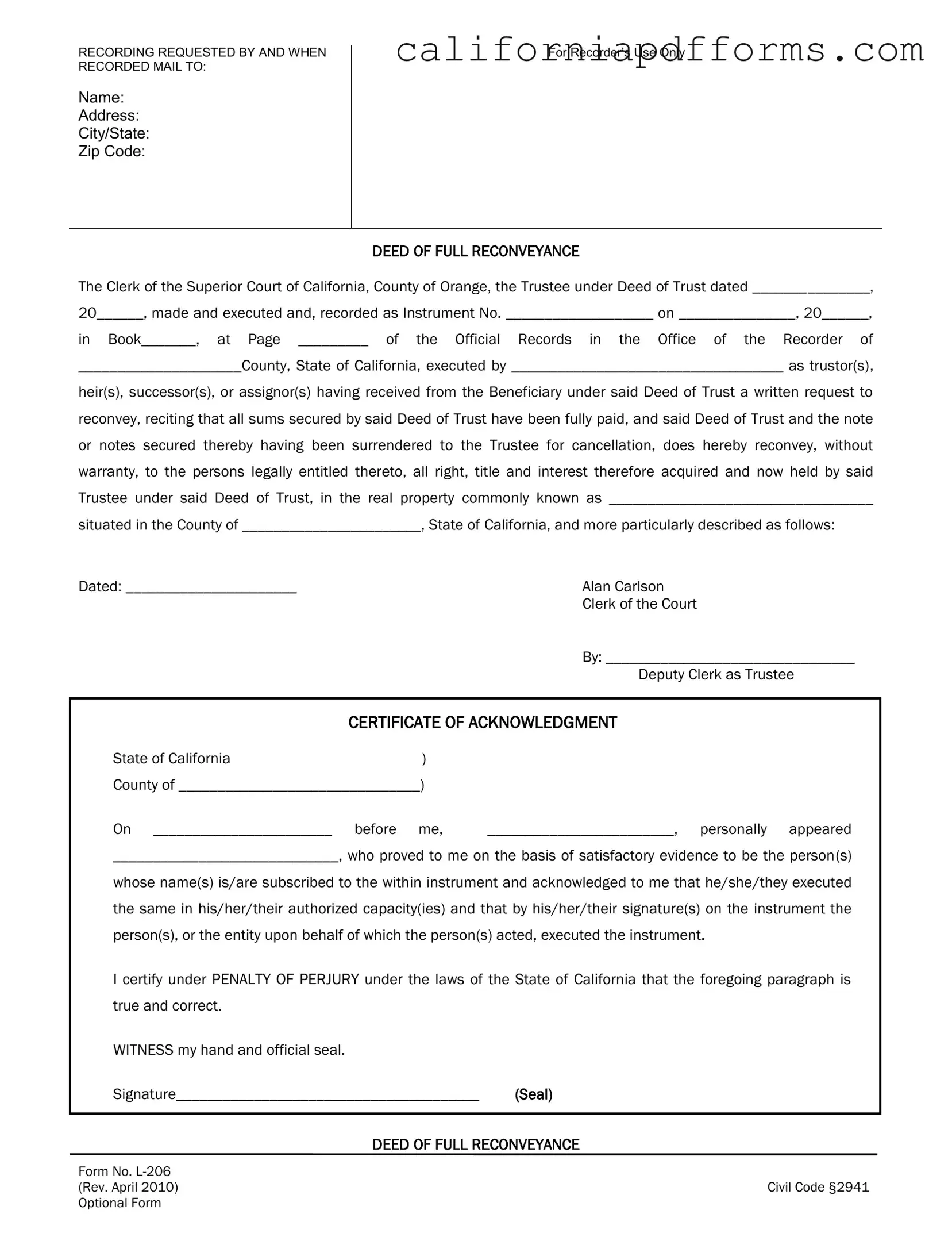The California L 206 form is a legal document known as the Deed of Full Reconveyance. It is used to officially confirm that a borrower has paid off their mortgage or deed of trust in full. By completing this form, the trustee relinquishes their interest in the property, effectively returning full ownership to the borrower.
This form is typically used by borrowers who have fully paid off their mortgage or deed of trust. It is also relevant for trustees who need to acknowledge that the debt has been satisfied and that they no longer hold any interest in the property.
The L 206 form requires several key pieces of information, including:
-
The names and addresses of the parties involved.
-
The date the original deed of trust was executed.
-
The recording information of the deed of trust, such as the instrument number and the book and page number.
-
A description of the property being reconveyed.
-
The date of the reconveyance.
To file the L 206 form, it should be completed and signed by the trustee. After that, it must be recorded with the county recorder's office where the property is located. This step ensures that the reconveyance is officially recognized and becomes part of the public record.
If the L 206 form is not filed, the borrower may still technically own the property, but the trustee's interest may remain on record. This can create complications in future transactions involving the property, such as selling or refinancing, as the existing lien may still appear on title reports.
Yes, there is typically a fee for recording the L 206 form with the county recorder's office. The amount can vary by county, so it’s advisable to check with the local recorder’s office for the exact fee structure.
The L 206 form can be used for various types of real property, including residential, commercial, and agricultural properties, as long as the property is located in California and is subject to a deed of trust that has been paid off.
What is the significance of the Certificate of Acknowledgment?
The Certificate of Acknowledgment is an important part of the L 206 form. It verifies that the signatures on the document were made in the presence of a notary public, ensuring the authenticity of the signatures. This step adds an extra layer of protection against fraud.
While it is possible to fill out the L 206 form yourself, it is often beneficial to seek assistance from a legal professional. They can help ensure that all necessary information is accurately completed and that the form is filed correctly, minimizing the risk of issues down the line.
